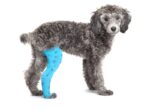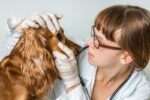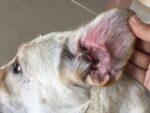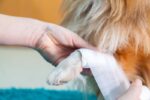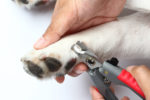Vets do see fractures in dogs and cats. They normally happen in both for the same reason, some trauma, quite commonly road traffic accidents that will cause them being hit by a car. And amazingly they seem to, especially in cats, they seem to have to run off. And then it is only a few […]
Comprehensive Guide to Common Pet Injuries
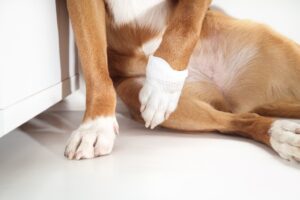 Animal Bites and Scratches
Animal Bites and Scratches
Pets may sustain bites or scratches from other animals, leading to potential infections. Immediate care includes:
- Washing the wound with soap and warm water or a mild disinfectant.
- Drying the area with clean gauze.
- Covering the wound with a sterile dressing.
For detailed guidance, refer to our article on Animal Bites and Scratches.
Fractures
Broken bones require prompt attention. Signs include limping, swelling, and pain. First aid steps involve:
- Keeping the pet as still and calm as possible.
- Immobilising the affected area using a makeshift splint, if trained to do so.
- Transporting the pet to a veterinarian immediately.
Learn more about fracture management in our Advanced Pet First Aid Level 3 course.
Eye Injuries
Eye injuries can result from foreign objects, scratches, or infections. Symptoms include redness, swelling, and discharge. Immediate care involves:
- Preventing the pet from rubbing or scratching the eye.
- Flushing the eye with sterile saline solution, if available.
- Seeking veterinary care promptly.
For more information, visit our page on Eye Injuries.
Burns
Pets can suffer burns from heat sources, chemicals, or electrical injuries. First aid measures include:
- Immediately flush the affected area with cool (not cold) water.
- Applying a sterile, non-stick dressing to the burn.
- Avoid the use of creams or ointments unless prescribed by a veterinarian.
- Seeking veterinary attention promptly.
For comprehensive information, refer to our article on Burns.
Preventive Measures
Preventing injuries is key to your pet’s health. Consider the following strategies:
- Regularly inspecting your home and garden for potential hazards.
- Supervising interactions with other animals to prevent fights.
- Keeping harmful substances out of reach.
- Providing proper training to discourage risky behaviours.
Further Resources
Expand your knowledge of pet injury prevention and care with these resources:
For professional training, consider enrolling in our Advanced Pet First Aid Level 3 (VTQ) course.

